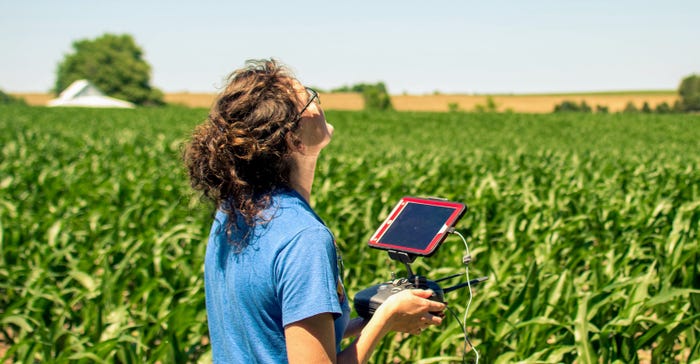August 1, 2022

If you are looking for an opportunity to increase productivity on your operation, network with other farmers in your area or solve a problem, Nebraska On-Farm Research could be the ticket.
Nebraska OFR strives to directly work with the producer to increase productivity, profitability and long-term sustainability. In interviews that were conducted with participants of OFR studies, it was reported that an average of $31.25 was gained per acre. With savings or increased profitability, many producers have found the OFR Network to be a valuable part of their operation.
History lesson
On-farm research in Nebraska is not a new idea. It was founded in Saunders County in 1989 by 12 pilot growers who evaluated various production systems and compared them to their current system. It was a three-year commitment for these producers, but because the studies were so useful, the program continued to expand.
In 2012, they combined similar efforts across the state and created the On-Farm Research Network. The network has been growing since then.
“Different studies have started across the state because producers found the value in conducting research in their environment,” says Laura Thompson, Nebraska OFR Network and ag technology Extension educator.
The OFR team is made up of a variety of people, including Extension educators in crops and water, Extension specialists, graduate students, technologists, interns and, of course, farmers.
“Producers really like to have reliable and unbiased information, and the studies they do have relevance to their own operations,” Thompson says.
A lot of the time, producers will look at the results of a study and think it might not have the same results on their operation due to a variety of reasons, such as climate, soil types and feasibility in general.
One of many benefits of having these educators and technologists on the team is that they are able to help with the technical aspects of these studies, including randomizing and replicating the treatments.
With the assistance to put together a viable study, the producers come to a confident conclusion at the end of the study. In addition, farmers build a good working relationship with their area Extension educator and create new relationships with other farmers.
Project ideas for next year
One of the projects producers are most interested in testing on their own farms is a nitrogen study. Producers are looking for ways they can be better stewards of their environment, decrease input costs and look at different technologies to increase efficiency.
The NRCS Conservation Innovation Grant (CIG) helps encourage technology and better practices to further natural resources conservation. A lot of studies in the OFR Network that are looking at nitrogen management are funded through the CIG program, which helps cover costs and risks farmers have in trying new technologies.

IN THE AIR: Laura Thompson, Nebraska On-Farm Research Network Extension educator, flies a drone as part of a study.
Cover crops are continually being researched. Producers want to learn more about different management practices that work well on their operation — along with looking at different species mixes, opportunity to graze, termination timing, seeding rates and early interseeding.
Different organizations will sponsor these efforts in order to reach a higher level of sustainability. For example, these efforts align with the NRCS focus on soil management and the Natural Resources Districts’ interest in ensuring groundwater quality.
Other research studies that are popular include soybean seeding rates and planting rates. “This topic has been researched a lot, but producers are interested to see what rates work best for their site-specific scenario,” Thompson says.
This is an example where producers want to be thorough and try the experiment themselves.
New tools
The Nebraska OFR Network has worked to create tools that make conducting research and accessing research results easier. One tool is the Results Finder Database, which makes research projects searchable, with more than 1,000 studies going 30-plus years back. You can look at different studies in your area, or even just search by a topic you are interested in.
The Digital Ag Training course is another tool that teaches participants how to use agriculture technology to conduct on-farm research. This is mostly used by Extension personnel, graduate students and crop consultants nationally.
Farm Stat is a web tool that takes the yield results from trials that are repeated and randomized and conducts a statistical analysis. Producers can take the results from the trials and enter it into the system, and the tool does the rest. It then will conduct the statistical analysis and help the farmers understand what the data means and draw conclusions from the study.
Bright future
“I have seen increased profitability, yield and overall increased long-term viability of an operation when producers engage in on-farm research,” Thompson says.
We can expect more digital aspects incorporated into the network in the future, allowing the studies to collect more data and look at treatment responses even deeper.
If you have a question, you can go to your local Extension educator and see if it would be a good study to start on your operation. There also might be a study funded by grants that you can try out on your operation.
The Nebraska OFR Network is a collaborative partnership that includes Nebraska Extension, the Nebraska Corn Board, Nebraska Corn Growers Association, Nebraska Soybean Checkoff and Nebraska Dry Bean Commission.
With any questions, email Thompson at [email protected], or visit on-farm-research.unl.edu.
Hodges writes from Julian, Neb.
You May Also Like




